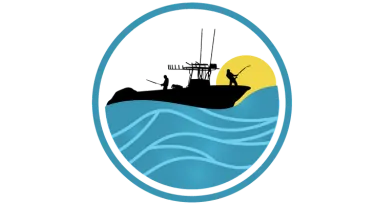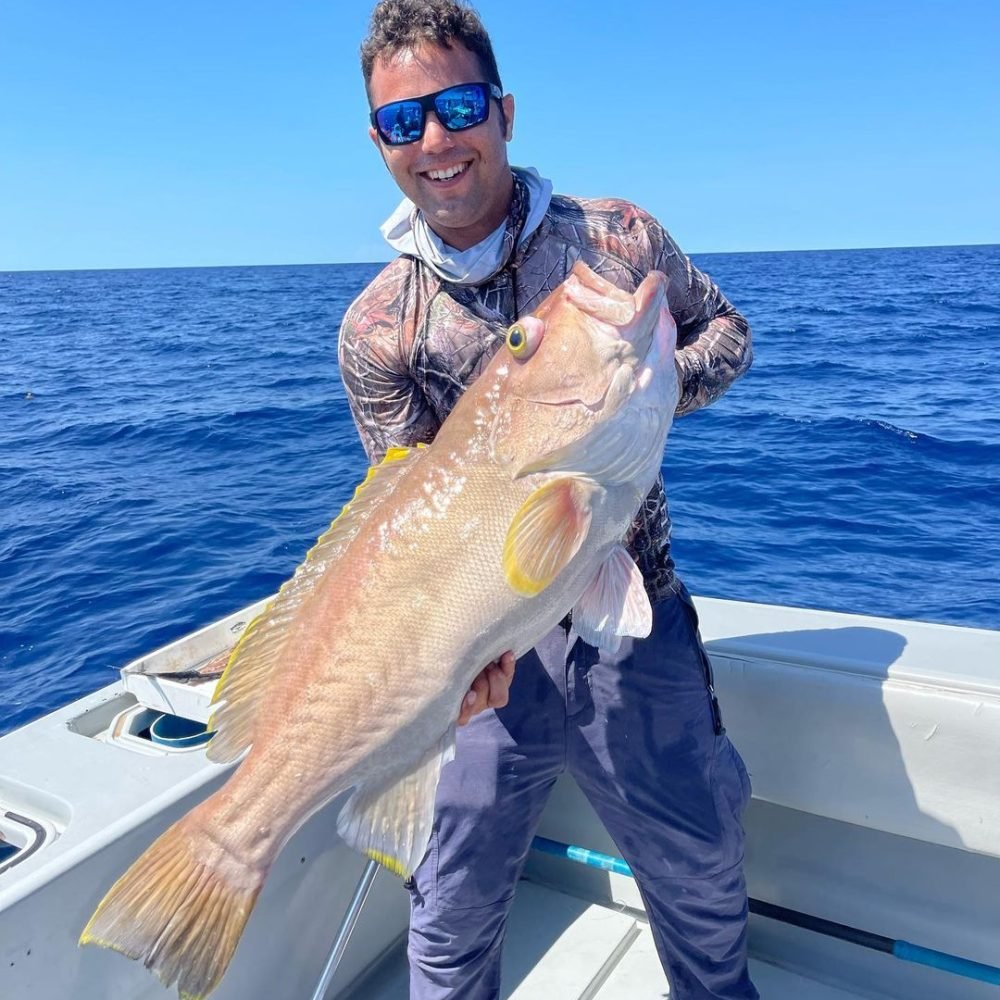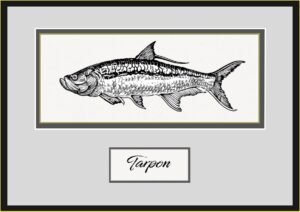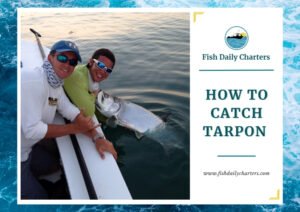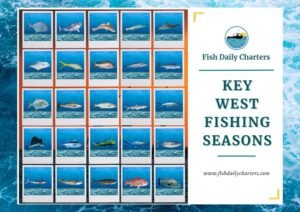Deep-sea, or offshore fishing, happens in waters far from the shore. These waters are usually deeper than 30 meters and miles from the coast. This popular pastime is enjoyed by a charter boat specially equipped for deep water and large fish. Offshore or deep sea angling includes many techniques and environments. These range from trolling in the open ocean to bottom fishing near underwater structures.
Unlike inshore fishing, offshore focuses on catching different species and uses specific equipment. People use different techniques. These include trolling and live bait. When going into offshore waters, you’ll expect to reel in yellowfin tuna, blue marlin, wahoo, red snapper, and grouper. They live in deep waters all year and during their migrations.
Offshore fishing is harder than inshore . This is due to the large fish and tough ocean conditions. It’s a great choice for thrill-seekers who enjoy catching big game fish. Being far from shore with no land in sight adds to the adventure of offshore trips.
Offshore boats are for rough seas and long distances. They are larger and tougher than inshore boats. You’ll experience exciting activities like deep-sea and bottom fishing, as well as trolling for large game fish.

Is Offshore Fishing Saltwater?
Yes, offshore always takes place in saltwater. It occurs in the open ocean, far from the shore, where saltwater dominates. Offshore spots are in deep ocean waters. They are near underwater structures and plants like kelp forests and coral reefs.
The main focus of most offshore fishing trips is to catch saltwater species such as tuna, blue marlin, and wahoo. Ocean currents and depth greatly influence the types of fish you catch. Tides and weather also play a role in the success of your offshore fishing trip.

Where Can You Offshore Fish?
Many coastal areas across the world offer the opportunity for fishing offshore in deep waters away from the beach or shore. Some well-known spots for offshore fishing include:
- Gulf of Mexico: The deep waters and structures, like oil rigs, are perfect homes for many offshore fish. These fish include tuna, snapper, and king mackerel.
- Caribbean Sea: Warm water and rich marine life make places like the Bahamas and Puerto Rico popular. Anglers go there to fish for marlin, sailfish, and wahoo.
- Atlantic Ocean: The eastern seaboard of the United States is famous for its diverse marine life. It extends from the Outer Banks of North Carolina to the waters off New England. The life includes bluefin tuna, striped bass, and sharks.
- Pacific Ocean: The Pacific Ocean stretches from the West Coast of the United States to Australia. It provides many chances to reel in fish such as yellowfin tuna, marlin, and dorado. Cabo San Lucas in Mexico and the Great Barrier Reef in Australia are both top spots for offshore fishing.
- Mediterranean Sea: You’ll discover a wealth of history and a wide variety of marine creatures, including bluefin tuna and swordfish, when fishing. Spain and Italy are both great places to spend time enjoying offshore fishing adventures.

What Species of Fish Can You Catch Offshore?
Fishing in the open sea gives anglers a thrilling chance to catch many types of fish. The kinds of fish an angler might run into change based on where you are and the season. Some popular species include:
- Yellowfin Tuna: These fish are well-known for their speed and strength, and they are typically found in deep waters. Anglers highly value them as a catch.
- Blue Marlin: They are known for their large size and energetic battles, making them a popular choice among anglers. These fish are commonly found in tropical waters.
- Wahoo: Wahoo are quick and strong. They are often caught while trolling and are famous for their great flavor.
- Red Snapper: Found near underwater structures, these fish are popular for their tasty, firm meat.
- Grouper: Bottom dwellers that are difficult to catch and highly valued for their flavor.
- Sailfish: Sailfish are beloved by sport fishermen for their incredible speed and aerial acrobatics.
- King Mackerel: Sailfish are a top choice for sport fishermen due to their incredible speed and aerial stunts. They are known for their strong fighting skills and are typically found in deeper coastal waters.
- Amberjack: Strong fighters that are often found around reefs and shipwrecks.
- Dorado (Mahi-Mahi): Noted for their striking colors and energetic confrontations, typically caught while trolling.
- Sharks: Reeling in different species, such as mako and hammerhead sharks, offers an exhilarating challenge for anglers.
- Swordfish: Discovered in the depths of the ocean, these creatures are famous for their large size and incredible strength, often caught using deep-dropping techniques.
- Tarpon: Large tarpon are commonly linked to inshore, but they are also spotted further out, particularly when they are migrating.
- Giant Trevally: These fierce fish are commonly found in tropical waters and are famous for their aggressive behavior and intense battles.

What are Popular Techniques Used in Offshore Fishing?
Different techniques are used depending on the environment and the type of fish species you’re trying to catch. Here are some of the most popular ones:
- Trolling: In this approach, you’ll drag lures or baited hooks behind a moving boat. The goal is to entice fast-swimming fish like marlin, tuna, and wahoo. It’s a great way to cover a large area and reel in some big fish.
- Bottom Fishing: Target species like grouper and snapper that live near the ocean floor by using weighted rigs. Keep the bait close to the bottom for easy access by the fish.
- Jigging: By moving a weighted bait in an up-and-down motion in the water, you entice fish like amberjack and mackerel. This technique is very successful near underwater structures.
- Live Bait: A good number of fishermen choose to use bait like sardines, mackerel, or squid to attract bigger predatory fish. This method is often used in combination with other techniques, such as trolling or bottom fishing.
- Drift Fishing: Drifting with the current or wind while using baits or lures to attract fish is a great way to cover a wide area. This technique is perfect for targeting species such as tuna and kingfish.
- Deep Dropping: This strategy involves depths over 300 feet. It uses heavy weights to lower baits to the ocean floor. It targets species like swordfish and tilefish.
- Kite Fishing: You use a kite to dangle the bait at the surface. This gives it a natural appearance. Attracting sailfish and other surface-feeding fish well.
- Chunking: Chop the bait into pieces and cast them into the water to attract fish. This method is commonly practiced to lure in large schools of tuna.

What Equipment Do You Need for Offshore Fishing?
Offshore fishing requires special gear. It is designed to meet the demands of deep water and the large fish you’ll encounter. Check out these must-have items:
- Rod and Reel: You’ll need a strong rod and reel combo. It’s best to go for a 50-80 pound class rod with a high-capacity reel that handles big, fast fish such as tuna and marlin.
- Line: Choose a 50-100 lb braided line for toughness and longevity. Also, use a 100-200 lb monofilament or fluorocarbon leader. It will combat the roughness caused by hefty fish and submerged structures.
- Terminal Tackle Essentials: This includes circle hooks, J-hooks, treble hooks, sinkers, weights, and heavy-duty swivels. These items are crucial for securing your bait and making sure you reel in those big fish.
- Lures and Bait: To attract different species, make sure to use a mix of lures and baits. Trolling lures, jigs, and poppers are great options to consider. Also, bait like sardines, mackerel, and squid helps lure in big predators.
- Tools: Make sure to have the necessary tools and accessories, such as pliers, a landing net, a gaff, a tackle box, and a valid license. Consider using a fish finder or GPS to help find fish and navigate the waters.
- Safety Gear: Remember to pack the required tools and accessories for fishing, including pliers, a landing net, a gaff, a tackle box, and a valid license. Using a fish finder or GPS is also helpful in finding fish and navigating the waters.
- Optional Equipment: Consider bringing fighting belts or harnesses to handle big, strong fish. Polarized sunglasses reduce glare. They help you see under the water. Sunscreen and proper clothing shield you from the sun.

What Kind of Boat is Best for Offshore Fishing?
Looking for a boat for offshore fishing? It’s important to think about the specific conditions and environments deep sea angling you’ll be dealing with. The best boats for this activity are:
- Sportfishing Yachts: Perfect for long sea journeys and deep-sea fishing, offering a smooth and secure ride even in tough conditions.
- Center Console Boats: With a spacious and versatile design, they provide all-around fishing access on an open deck and are built to handle rough waters with powerful engines for extended trips.
- Convertible Boats: These combine the luxury of a cruiser with the practicality of a sport fishing boat, featuring cabins and sleeping areas, ideal for long trips to catch marlin, tuna, and sailfish.
- Walkaround Boats: Offering cruiser comfort and sportfishing functionality, they have cabins and sleeping quarters, making them perfect for extended fishing expeditions targeting marlin, tuna, and sailfish.
- Catamarans: Known for their stability and comfortable ride due to twin hulls, they handle rough seas with ease and provide ample space for extended excursions.
- Express Boats: Sporty and powerful, these boats are designed for serious fishing outings, featuring an open cockpit and a small cabin for storage and protection, ideal for fast, exciting fishing trips at sea.

When is the Optimal Time for Offshore Fishing?
Planning a successful offshore trip depends on many factors. These include tides, seasons, and weather. Let’s take a closer look at these elements to find the best time for your adventure:
- Tides: High tides bring fish closer to the surface, while low tides make some fish more accessible. Understanding tidal shifts is essential.
- Seasons: Spring and summer are prime seasons with warmer water and active fish like tuna and marlin. Fall is excellent for catching wahoo and sailfish.
- Weather Conditions: Calm winds and stable weather provide the best fishing conditions. Cloudy days can improve fishing by cooling the water and making fish less cautious. Always check the forecast to avoid storms and strong winds.

What are the Benefits of Offshore Fishing?
There are countless perks from offshore fishing, such as:
- Adventure and Excitement: Experience the thrill of catching impressive game fish like marlin, yellowfin tuna, and wahoo. The challenge of fighting these powerful fish adds to the excitement.
- Diverse Species: Encounter various species like mahi-mahi, sailfish, grouper, and amberjack, promising a unique catch every trip.
- Scenic Ocean Views: Enjoy breathtaking views and a serene atmosphere away from crowded shores. Witness marine wildlife in their natural habitat.
- Skill Development: Master techniques like trolling, bottom fishing, and bait fishing, enhancing your fishing skills whether you’re a novice or seasoned angler.
- Physical Challenge: Offshore fishing demands physical effort due to conditions and large catches, helping you stay active and build endurance and strength.
- Social Aspect: Enjoy group outings with friends, family, or fellow fishing enthusiasts, creating bonding moments and lasting memories.
- Potential for Large Catches: The rich marine habitats offer the perfect setting for landing larger fish, providing the thrill of a big catch.
What is the Difference Between Offshore Fishing and Inshore Fishing?
Inshore and offshore fishing have different locations, target species, and equipment. Inshore takes place in shallow water near the shore. It targets species like redfish, snook, and trout. It often uses smaller boats or the shore, piers, or wading amongst underwater plants. One of the main difference between inshore vs offshore fishing is, offshore fishing goes into deeper waters, far from shore, to catch larger species such as tuna, marlin, and sailfish. It requires larger boats and special gear. A big difference between inshore vs offshore fishing is that offshore fishing needs more prep, skill, and endurance. It’s a tough experience with larger, more powerful fish.
What Types of Fish are Found Offshore in Florida?
Florida offers a diverse range of fish, including tuna, known for their speed and strength, and marlin sought after for their size and acrobatic fights. You might also encounter wahoo, red snapper, grouper, sailfish, and king mackerel, each presenting unique challenges and rewards. To learn more about these and other fish species offshore here, visit our blog!
How to Book an Offshore Fishing Charter?
Ready for an exciting offshore fishing charter boat trip? Make sure you have a successful and thrilling experience with an experienced captain and all the gear needed. You’ll target big game fish in deep waters. Reserve your adventure and trip with Fish Daily Charters today and embark on an unforgettable fishing experience.
